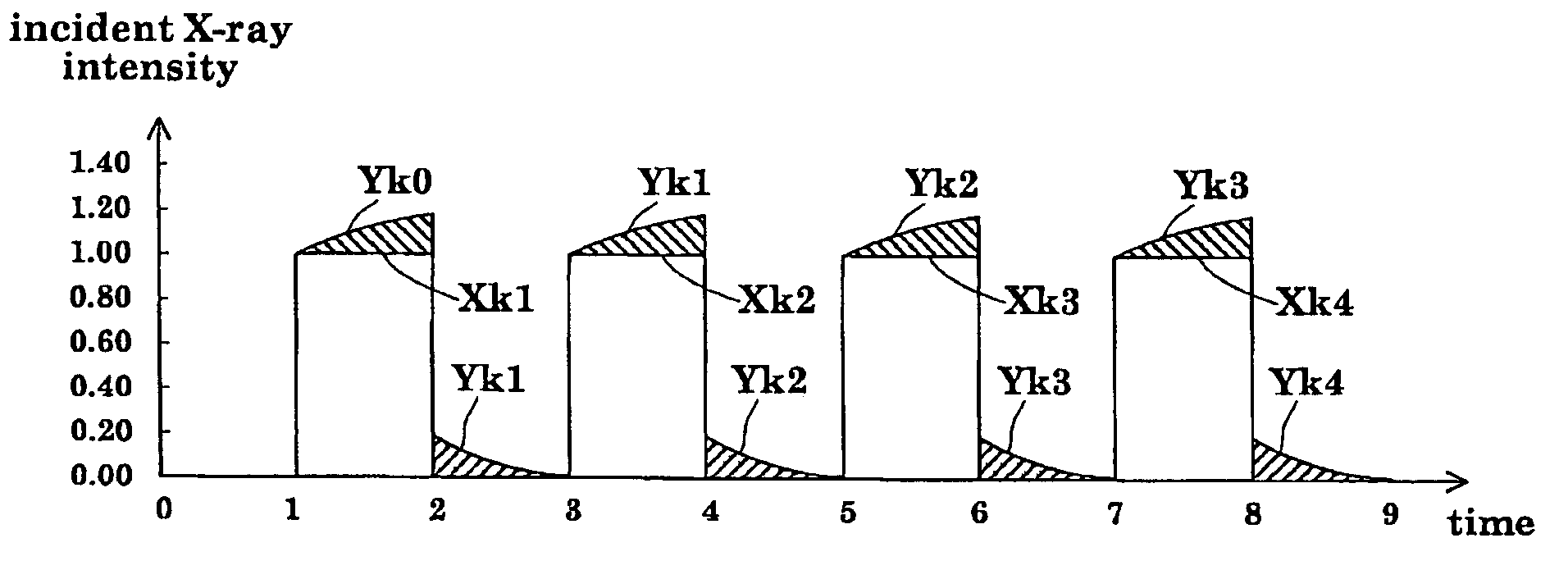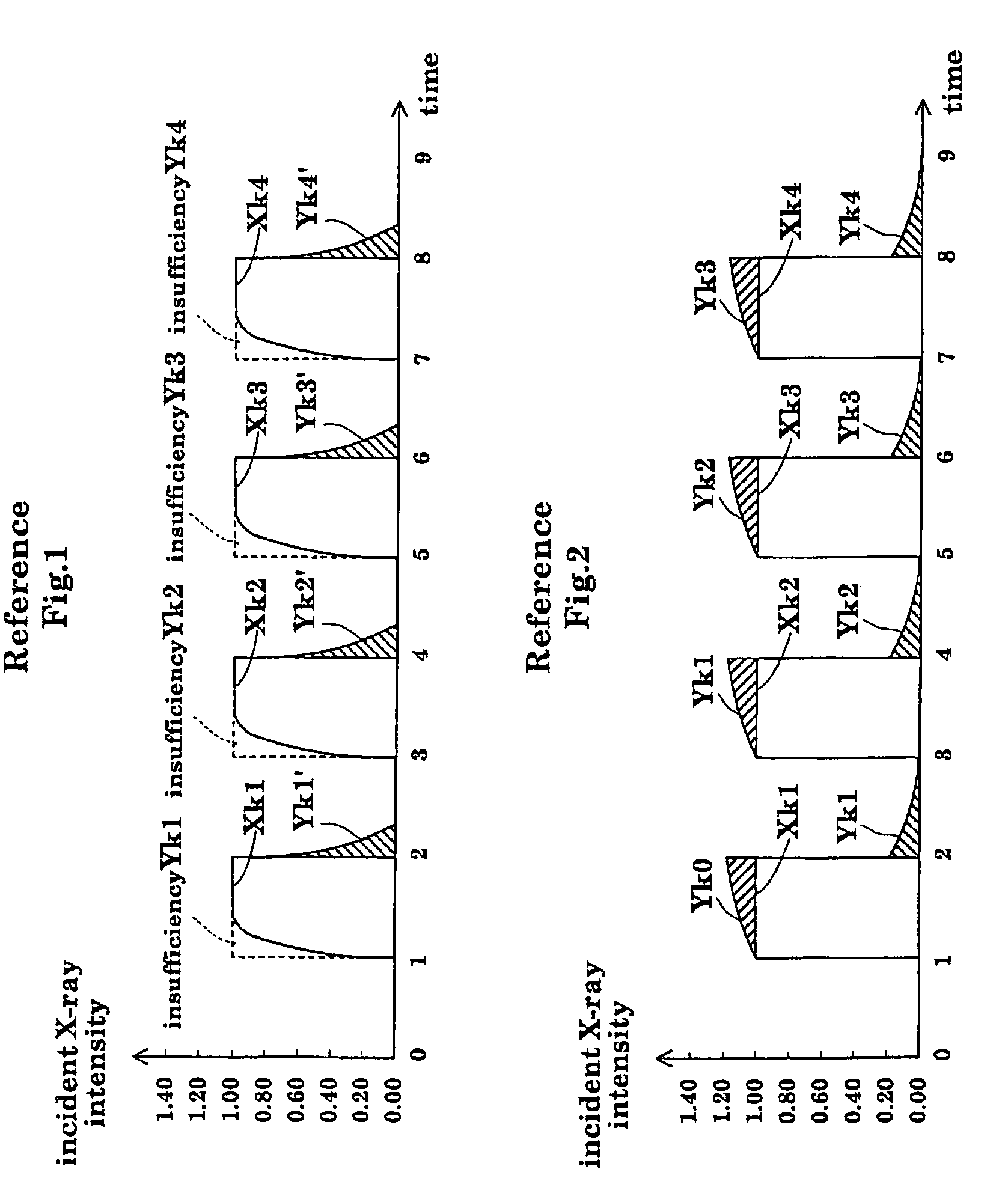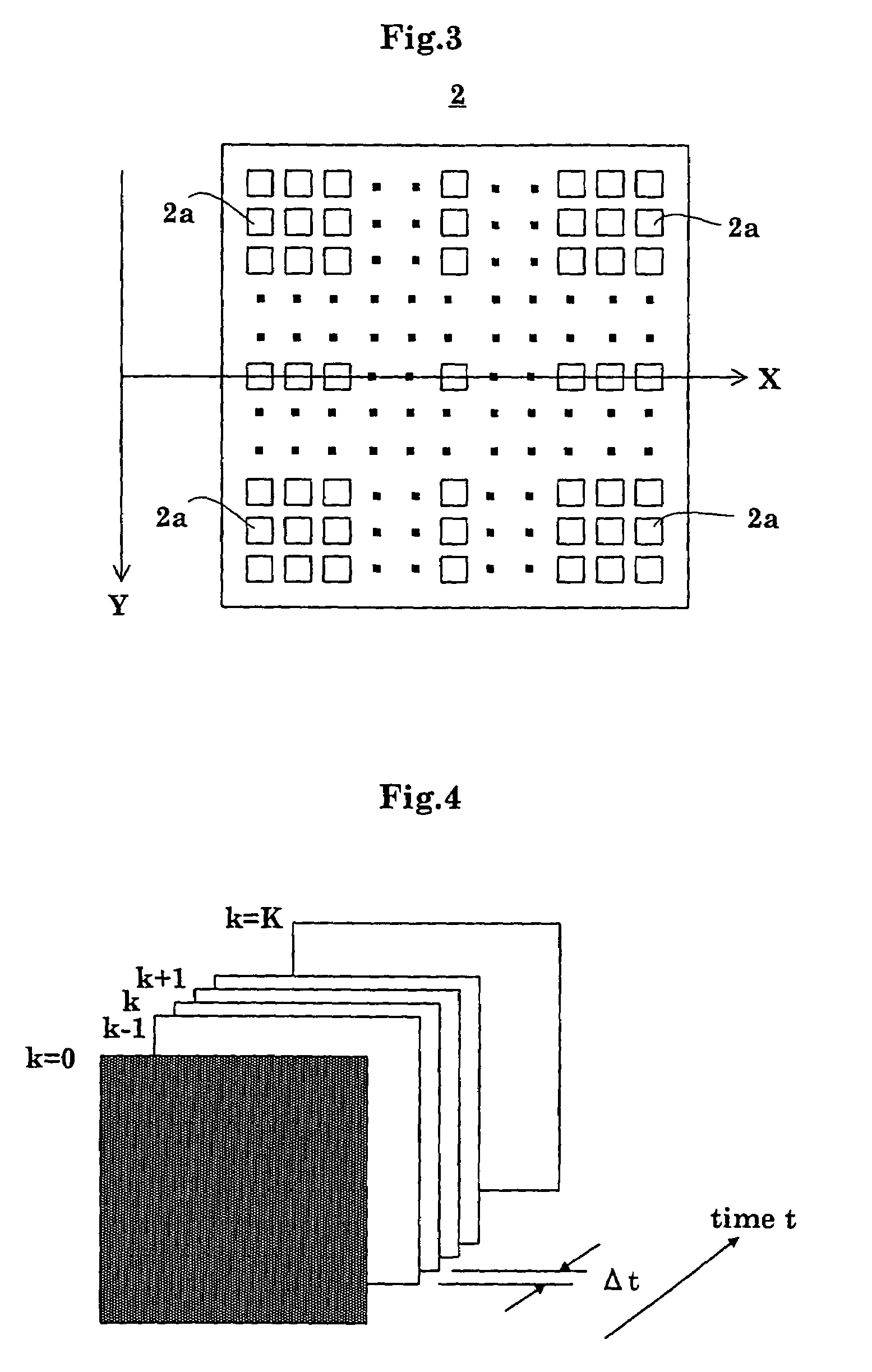Radiographic apparatus that removes time lag by recursive computation
a radiographic and time-lag-removing technology, applied in the field of radiographic equipment, can solve the problems of fpd causing time lags whose adverse influence appears in x-ray images, blurring dynamic images, and inability to avoid artifacts, so as to eliminate the time lags of radiation detecting signals and remove complex detecting distortions from output images
- Summary
- Abstract
- Description
- Claims
- Application Information
AI Technical Summary
Benefits of technology
Problems solved by technology
Method used
Image
Examples
first embodiment
[0058]FIG. 2 is a block diagram showing an overall construction of a fluoroscopic apparatus in a first embodiment.
[0059]As shown in FIG. 2, the fluoroscopic apparatus includes an X-ray tube (radiation emitting device) 1 for emitting X rays toward a patient M, an FPD (radiation detecting device) 2 for detecting X rays transmitted through the patient M, an analog-to-digital converter (signal sampling device) 3 for digitizing X-ray detection signals (radiation detection signals) taken from the FPD (flat panel X-ray detector) 2 at predetermined sampling time intervals Δt, a detection signal processor 4 for creating X-ray images based on X-ray detection signals outputted from the analog-to-digital converter 3, and an image monitor 5 for displaying the X-ray images created by the detection signal processor 4. That is, the apparatus is constructed to acquire X-ray images from the X-ray detection signals taken from the FPD 2 by the analog-to-digital converter 3 as the patient M is irradiate...
second embodiment
[0090]In the second embodiment, the time lag remover 11 computes the lag-free X-ray detection signals Xk corresponding to the X-ray detection signals Yk for one X-ray image, and the detection signal processor 4 creates X-ray images, both at each period between the sampling time intervals Δt (= 1 / 30 second).
[0091]This embodiment has the same construction and function as the first embodiment except that the apparatus is constructed for creating X-ray images one after another in real time at a rate of about 30 images per second, and displaying the created X-ray images continuously in real time. The features common to the first embodiment will not be described, and description will be made on what is different from the first embodiment.
[0092]An operation for performing X-ray radiography with the apparatus in the second embodiment will be described with reference to the drawings.
[0093]FIG. 7 is a flow chart showing a procedure of X-ray radiography in the second embodiment.
[0094][Step R1]...
PUM
| Property | Measurement | Unit |
|---|---|---|
| attenuation time constants | aaaaa | aaaaa |
| time constants | aaaaa | aaaaa |
| attenuation time constant | aaaaa | aaaaa |
Abstract
Description
Claims
Application Information
 Login to View More
Login to View More - R&D
- Intellectual Property
- Life Sciences
- Materials
- Tech Scout
- Unparalleled Data Quality
- Higher Quality Content
- 60% Fewer Hallucinations
Browse by: Latest US Patents, China's latest patents, Technical Efficacy Thesaurus, Application Domain, Technology Topic, Popular Technical Reports.
© 2025 PatSnap. All rights reserved.Legal|Privacy policy|Modern Slavery Act Transparency Statement|Sitemap|About US| Contact US: help@patsnap.com



